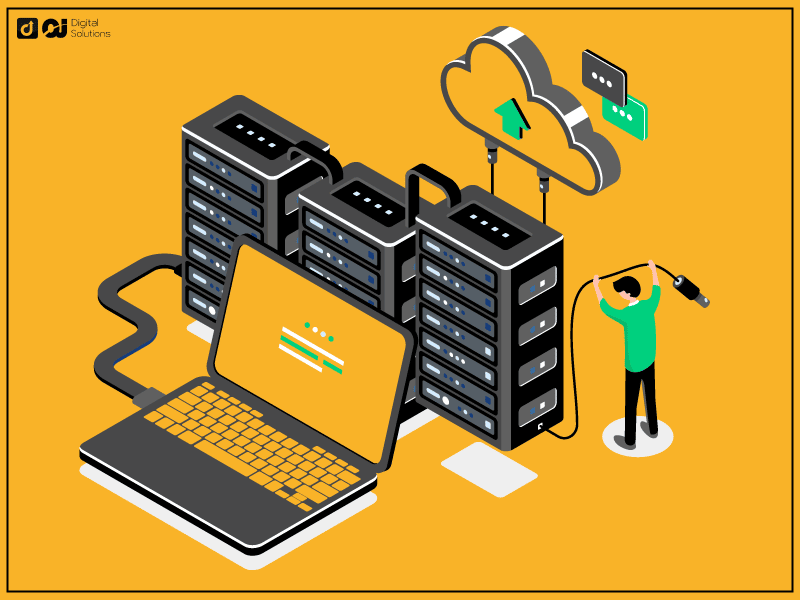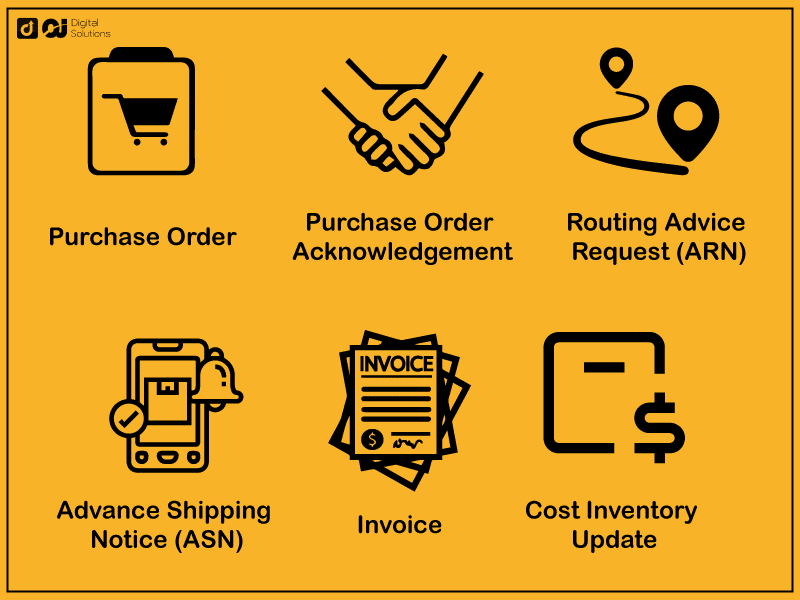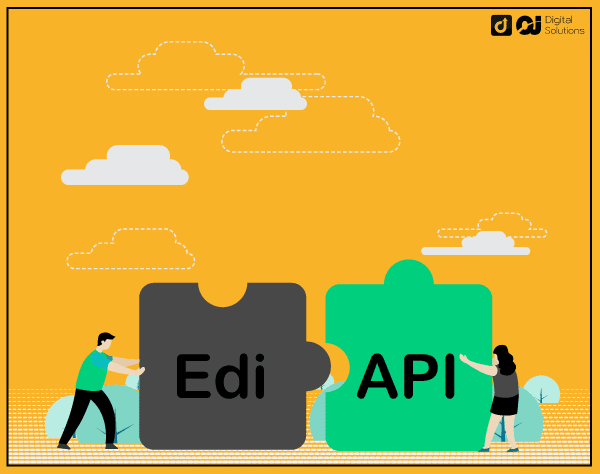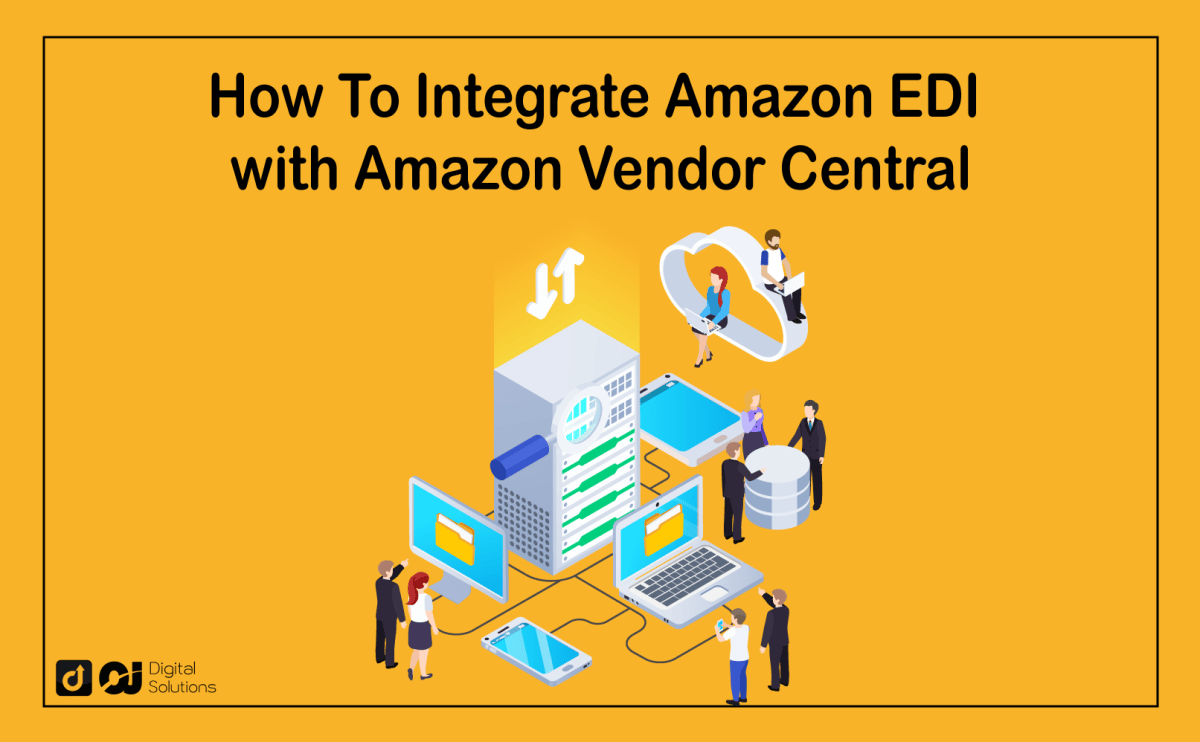Amazon Electronic Data Interchange (Amazon EDI) is a process that allows businesses to send and receive information electronically.
Businesses use EDI to streamline their communications with suppliers, saving time and money.
But how does it work?
In this article, I discuss what you need to know about Amazon EDI, including what it is, how it works, and its benefits.
I will also provide some tips on how to get started with Amazon EDI.
What Is EDI?

EDI stands for Electronic Data Interchange, a process that allows businesses to send and receive information electronically.
This system streamlines communication between businesses, suppliers, and other retailers, saving time and money.
EDI works by allowing businesses to exchange information using a standard format. Companies can use this format to exchange purchase orders, invoices, and other business documents.
The EDI process is a very efficient way to do business because it eliminates the need for paper documents. Businesses can save time and money by not having to print, mail, or fax documents.
EDI allows businesses to send and receive information electronically, which helps improve the accuracy of information by eliminating the need for manual data entry.
EDI also allows businesses to communicate with their suppliers in real time and get up-to-date information about inventory levels, prices, and delivery times.
What Is Amazon Vendor Central?

Amazon Vendor Central is a website or web interface that allows businesses to sell products to Amazon.com.
Businesses can list their products on Amazon Vendor Central, and Amazon will then purchase the products from the businesses.
Amazon Vendor Central is an excellent way for businesses to increase their sales.
What is the difference between Amazon Vendor Central and Amazon Seller Central?
Well, it’s who you will be selling your items to.
You can sell directly to Amazon customers using Seller Central.
However, with Amazon Vendor Central, you can sell your products directly to Amazon and have a vendor account manager.
What Can You Transmit Over EDI?

Here are the typical messages that Amazon Vendors send through Amazon EDI.
- Purchase Order
- Purchase Order Acknowledgement
- Routing Advice Request (ARN)
- Advance Shipping Notice (ASN)
- Invoice
- Cost Inventory Update
Most vendors set up electronic data interchange so they can send invoices back to Amazon and download purchase orders to their systems.
EDI is a low-cost, fast, and efficient solution for downloading orders to your system, and many EDI integrators can accomplish it for you.
Here are messages you currently can’t transmit to Amazon Vendor Central.
- Product creation
- Price change negotiations
- Product listing (images, features, and descriptions)
What Are the EDI Requirements for Amazon Vendor Central?
Amazon Vendor Central relies heavily on EDI for the required document interchange to create and deliver orders. You need a Vendor Central Account if you want to use EDI. However, remember that registration to Amazon Vendor Central is by invitation only.
Once you have an Amazon Vendor Central account, you need to log in and ask so you can carry out the EDI Self-Service Startup.
To link with Amazon, finish the self-service survey on Vendor Central. You will need to specify different information, including:
- Product Measurement Codes and IDs: When processing Amazon orders, specify the item identifiers and the kind of measurement unit you would like to use.
The ideal code to choose fits your company’s needs and is simple to retrieve from your back-end systems.
- Sender/Receiver IDs: Sender/Receiver IDs are required by all EDI trade partners, including Amazon, to validate the EDI documents and ensure that messages transmitted or received are handled correctly.
- Connection: Identify the connection you intend to establish between Amazon Vendor Central and your back-end systems.
You have three options.
- Amazon-hosted SFTP
- AS2
- Value-Added Network (VAN)
- Perform tests to ensure the EDI is adequately linked and functioning Before using the Amazon Vendor Central System to handle legitimate orders. Test the EDI by utilizing the sample documents that Amazon offers you. You’ll need a few product details to conduct this testing. Product information examples include:
- Invalid item
- Backorder item
- In-stock item
- Discontinued item
- Product Codes
- Vendor SKU
- EAN/ISBN-13
- Amazon ASIN
- UPC
- ISBN-10
- GTIN
- Measurement Units
- UN (Unit)
- PE (Pounds Equivalent)
- EA (Each)
- CA (Case)
What Are the Benefits Of EDI Integration with Amazon Vendor?
There are many benefits of integrating Amazon Vendor Central with EDI.
Improved Efficiency in Order Processing
The seamless integration between EDI and Amazon Vendor Central enables businesses to automate order processing, improving order processing efficiency.
Businesses can save time and money by not having to process orders manually.

Reduced Errors and Improved Data Exchange Accuracy
EDI integration allows businesses to send and receive information electronically, eliminating the need for manual data entry and reducing errors to improve data accuracy.
Improved Communication With Suppliers
EDI integration with Amazon Vendor Central allows businesses and suppliers to communicate in real time, improving communication.
Businesses can get up-to-date information about inventory levels, prices, and delivery times, helping them provide fast and accurate shipments to Amazon distribution centers.
Real-Time Visibility Into Inventory Levels, Prices, and Delivery Times
Real-time communication can also give businesses real-time visibility into inventory levels, prices, and delivery times.
Allows Scalability
EDI integration with Amazon Vendor Central allows you to automate order processing. Automated order processing makes it easier to scale your business and process a high sales volume daily.

Reduces chargebacks
EDI integration with Amazon Vendor Central enables automated order processing, preventing manual processing mistakes that lead to chargebacks.
Limitations of Amazon EDI
Although integrating Amazon EDI has its benefits, it also has some limitations.
Through integration, you cannot build, upload, or change your catalog, and you are only able to update the stock status of your products once every 24 hours.
You also need to consider how you handle inventory and stock on other sales channels, how much of a priority you want to give other Amazon retailers, and so forth.
Is It Best to Use EDI or API?

Before I look at whether you should choose EDI or API, let’s first discuss what API is. API stands for “Application Programming Interface.”
API is a set of programming instructions that allow two pieces of software to communicate with each other. You can use an API to connect two different systems or applications. For example, if you want to connect your accounting software to your e-commerce platform, you need to use an API.
API is different from EDI in that it is not a standard format. Software vendors can create their own API, making it difficult to connect two pieces of software that use different APIs.
Now that I’ve discussed what an API is, I’ll help you choose between EDI or API.
EDI is a standard format, meaning many software vendors support EDI. This can make connecting two pieces of software that use EDI easier. Since EDI is a standard format, it’s also typically less expensive to implement than API.
One downside of EDI is that it can be challenging to make changes to an EDI system because EDI systems are typically complex and require the help of a software developer.
API, on the other hand, is less expensive to implement than Amazon Vendor Central EDI. It’s easier to make changes to an API system because it isn’t a standard format. Furthermore, Vendor API is not a standard format, so it’s typically easier to make changes to an API system.
So, which is best for you? The best way to determine whether you should use EDI or API is to look at your business needs.
Amazon Vendor Central EDI is the best option if you need real-time visibility into inventory levels, prices, and delivery times.
On the other hand, API is the best option if you only need to send invoices back to Amazon and download purchase orders to your system.
Frequently Asked Questions (FAQs)
How Much Does EDI Integration With Amazon Vendor Cost?
You can get a basic configuration that downloads purchase orders with a budget of three to four figures.
However, a more complex setup involving more information interchange may call for a four or five-figure budget. Budgets for large enterprises that require an international footprint and multi-system integration might reach six figures.
How Long Does It Take To Integrate Amazon Vendor With EDI?
The time it takes to integrate your Amazon Vendor account with EDI depends on:
- The system type
- The volume of information transmission
- The degree of complexity
Generally, integrations shouldn’t take long. You can expect a complete setup in two to three weeks.
Can You Install Amazon Vendor Integration by Yourself?
To set up an EDI solution, you might not need a software partner, but you might need some understanding of managing EDI messages in your internal systems.
You must also understand the basics of accepting and exporting messages from the ERP system. If you are unfamiliar with these tasks, you might need to hire an IT crew to set up the integration.
What Is an EDI Payment From Amazon?
An Amazon EDI payment is an electronic payment that Amazon sends to its vendors through their bank accounts. The Automated Clearing House (ACH) Network processes these payments.
You need to provide Amazon with your bank account information to receive an EDI payment. Once Amazon has your banking information, the company will be able to process payments to you electronically.
EDI payments are typically processed faster than traditional paper checks, allowing you to receive your payment sooner.
The Bottom Line
So there you have it! Everything you need to know about Amazon EDI.
I hope I’ve helped you understand what Amazon API is and how you can integrate it with Amazon Vendor Central.
The Amazon EDI integration process doesn’t have to be daunting or challenging.
Keep in mind that there are several advantages to integrating your vendor account, including a reduction in manual errors, a reduction in paperwork, and a reduction in chargeback expenses.
Visit our blog to learn more about maximizing your presence on Amazon.






